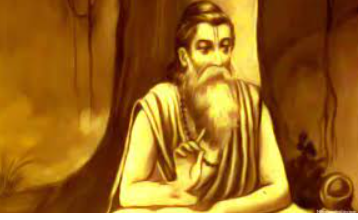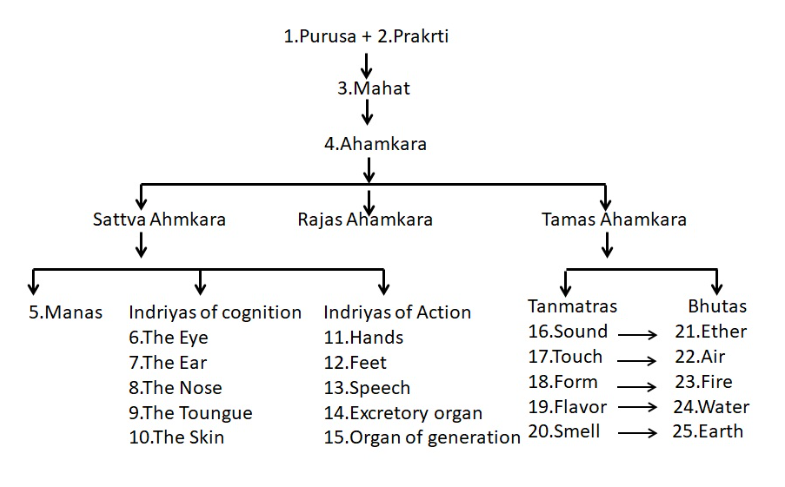What is Sankhya Philosophy
Sankhya philosophy and its history
Since ancient times, Indians have been searching for an explanation for the mysteries of life and existence. This search gave rise to several schools of thought and different philosophies. Sankhya or Samkhya philosophy is one of them. However, each philosophy recognizes the principle of karma, the cycle of birth and death, and reincarnation. Also, each acknowledges that moksha, or liberation is the ultimate aim of all human effort.
The Sankhya word in Sanskrit means ‘number’. It also stands for ‘taking into account.’ in this theory, everything is related to numbers, like the number of earth, the number of objects, etc. Sankhya philosophy has its own theories about the world’s creation and humankind’s evolution. It is the most intellectual and practical one with an attachment to metaphysics.
Kapila Muni is the father of Sankhya Philosophy.
The great Sage Kapila Muni is considered the founder of the Sankhya philosophy. He is the descendant of Manu, the primal human being, the grandson of the creator-god Brahma, and an avatar of Lord Vishnu. Sage Kapila is described in the Bhagavad Gita as a recluse adept in the Yogic Siddhas.

He was closely associated with yoga, and the philosophical inferences in the Gita are attributed to his Sankhya philosophy. A great practitioner of stringent yogic principles, he produced a store of such internal heat or Tapas that reduced the 60,000 sons of the Vedic king Sagara to ashes.
A well-known philosopher, and teacher, his disciples built the great city of Kapilavastu, where Buddha was born.
What do you mean by Sankhya philosophy?
The Sankhya philosophy is the dualistic theory of creation or, in other words, causation. It is an ancient theory and originally appeared in the Upanishads and the Bhagavad Gita. It was founded by the great sage Kapila, considered older than the Buddha.
The meaning of Sankhya is ‘number’ or ‘empirical.’ It theorizes that creation is neither implicit nor explicit, that there is no production and destruction. It also holds that the soul and the matter are two different things.
Samkhya is the oldest school of philosophy. It states that everything is derived from the Purusha or self, soul, intellect, and Prakriti or matter, creation, and energy.
The Sankhya philosophy believes that there are two types of bodies. A physical or temporal body, and an ethereal or subtle body that is not visible but persists after death. When the earthly body expires, the subtle body moves to another physical body. This is where the theory of reincarnation starts.
The subtle body consists of four parts:
- Buddhi, or consciousness.
- Ahamkara or i-consciousness or ego.
- Manas or the senses of the mind.
- Prana or breath.

What are the different phases in the Sankhya philosophy?
There are different phases of development in the Sankhya philosophy. The defining concept is that Purusha and Prakriti are enough to explain the cosmos.
The whole Universe is the combination of these in different quantities and qualities and to which Purusha is added.
According to the Sankhya view, Prakriti is the only active element while Purusha is inactive and only observes and experiences. Only when the spirit within recognizes that it is totally different from Prakriti and wishes to remove itself from its confines can the being attain Moksha or Salvation.
Why is Sankhya philosophy important in Education?
Sankhya philosophy believes that it is self-knowledge rather than some external agent or factor that leads to salvation. It has greatly contributed to our understanding of the environment and man’s relationship with the environment.
The Sankhya philosophy believes
- That the action or Karya is inherent in a cause.
- Thus, the development of man is already inherent in man.
- The work of gaining self-knowledge or education is to develop man to the fullest extent.
- This philosophy considers that education is essential to show one the difference between Prakriti (matter) and Purush (spirit).
- The Purush or the soul enlightens the three senses of man.
- It believes that the liberation of the soul or Mukti is the ultimate purpose of one’s life.
- Only when man distinguishes between the matter and the spirit can he obtain release from the miseries of life.
According to the Sankhya philosophy, this is the main purpose of education.
Yoga and the Sankhya philosophy.
The Sankhya philosophy influences a major part of yoga’s intellectual aspect. However, yoga believes in the existence of God, and it is the ideal the yoga practitioner aspires to achieve. Yoga is also more practical in nature.
Yoga attempts to reverse the Sankhya view of evolution, which is categorized in identifiable stages.Yoga believes that spiritual freedom or Moksha is possible when the Purusha or spirit frees itself from this world’s materialistic or Prakriti bondages. A yoga aspirant must learn to control his mind and detach it from material objects to enter, Samadhi.
What is Kaivalya in Sankhya Philosophy?
Kaivalya in Sanskrit means separateness. When the consciousness of an individual, soul, or Purusha, realizes that it is separate from matter or Prakriti and tries to liberate itself from it, then it goes forth on its journey of attaining Moksha.
The process of Kaivalya can be explained thus:
This procedure of separateness is known as Kaivalya. The cause-effect relation is the source of all creation in the Universe, and everything is bound by it.
Some great works on Sankhya philosophy
Conclusion
Out of the six theories of darshan in Hinduism, the Sankhya philosophy is the oldest one. It finds mention in Ramayana, Mahabharata and the Bhagavad Gita. Sankhya philosophy has time and again faced arguments from other schools of philosophy, but it has stood the test of time and emerged unscathed because of its realistic counterarguments. It encompasses all the important aspects of this world, the cause of nature’s existence, and human life.
what we offer
Explore Our Top Yoga Programs in Kerala

200H Yoga Teacher Training in Kerala
View Program

300H Yoga Teacher Training in Kerala
View Program

Yoga & Ayurveda Retreats
Shorter immersive retreats in Kerala combining yoga, Ayurveda, and meditation. Reconnect with yourself while experiencing India’s holistic traditions.
View Program
